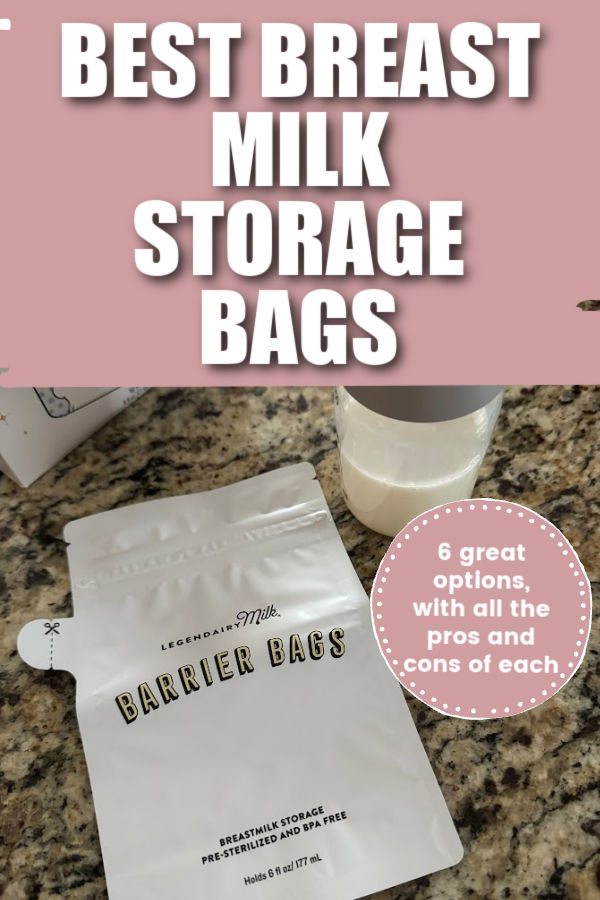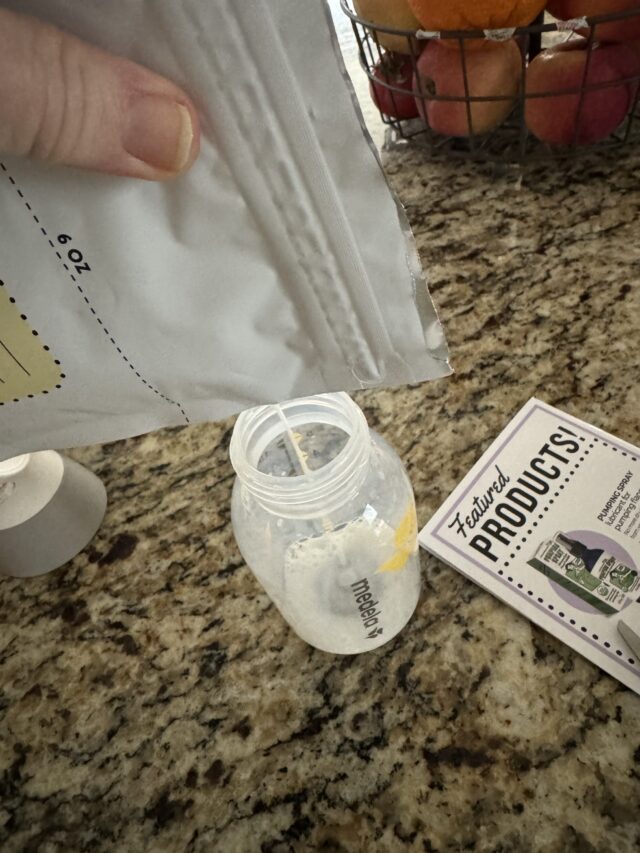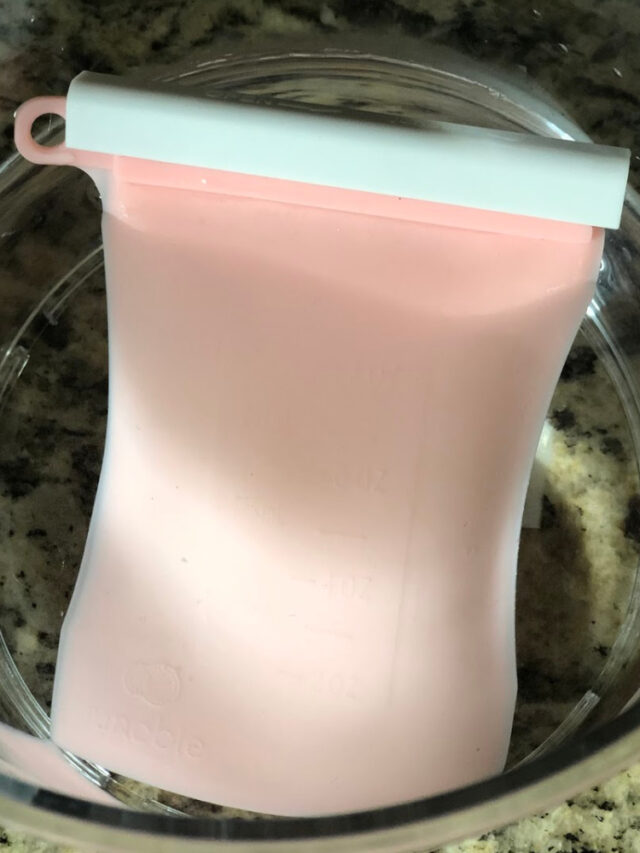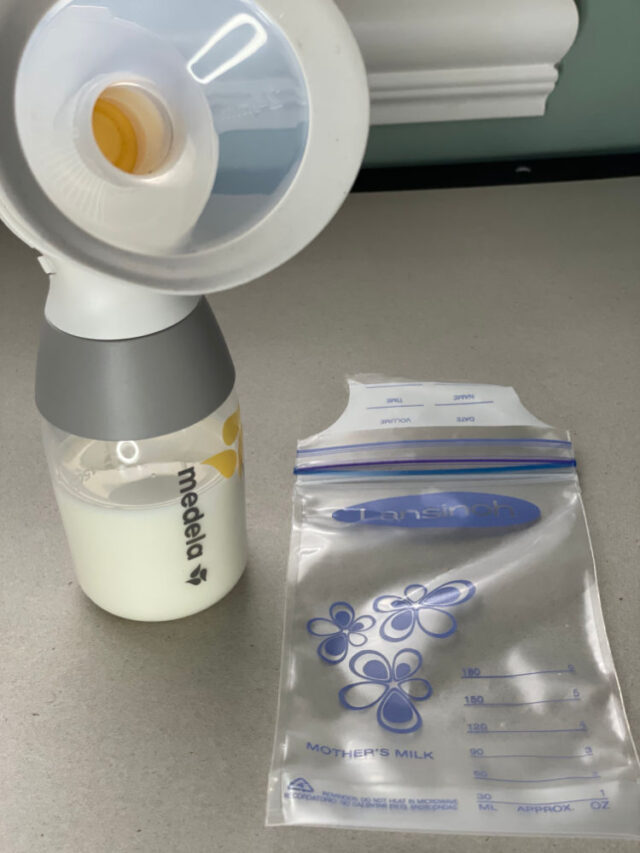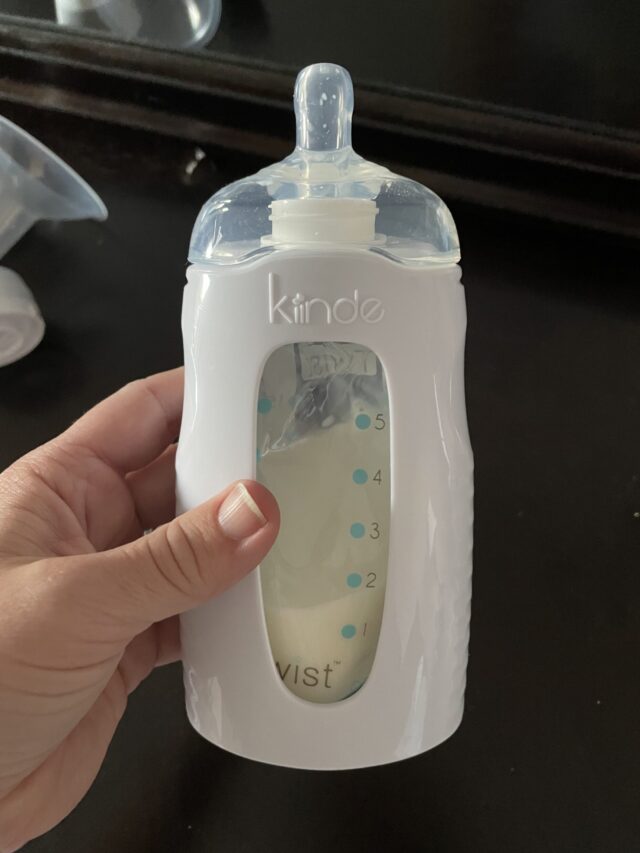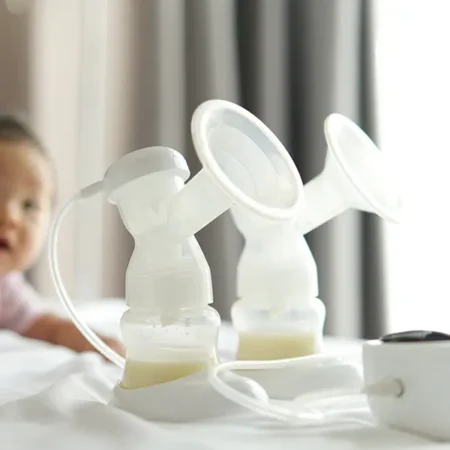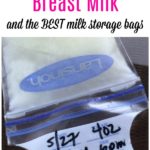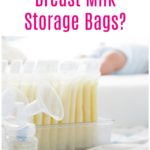Do you have extra breast milk that you need to freeze? Here are the basics of how to store your breast milk in the freezer, how to pick the best breast milk storage bag for you, and how to figure out how many milk storage bags you’ll need.
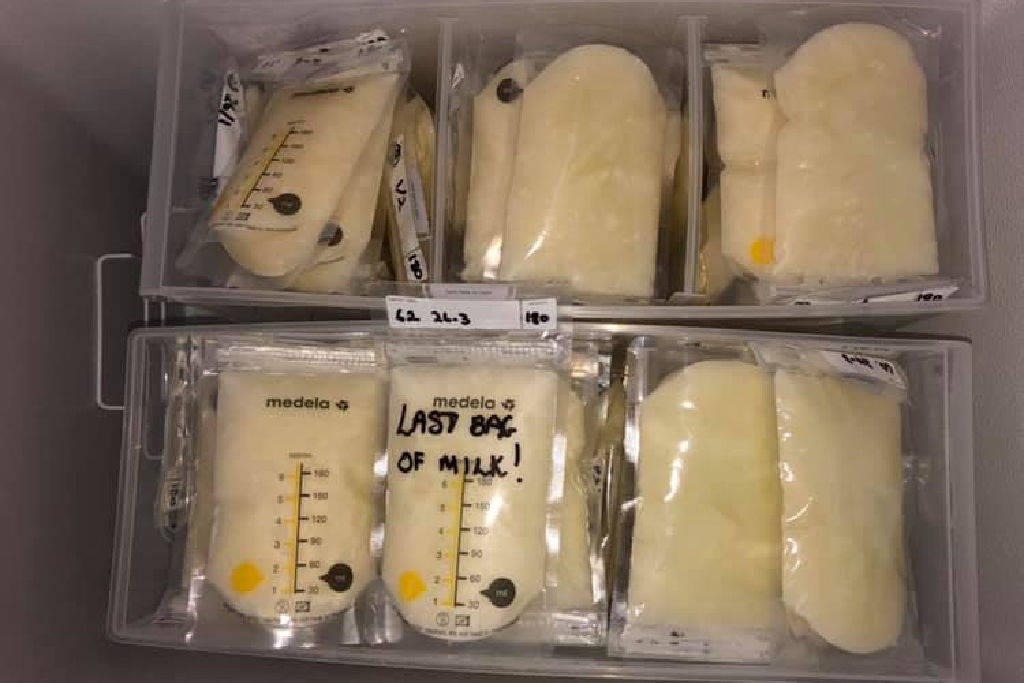
This post may contain affiliate links, which means if you click a link and purchase something, I may make a small commission at no additional cost to you. I only recommend products I love! More information here.
Breast milk storage bag basics
Before you buy breast milk bags, here are a few general things that you should know.
1. Most bags are not reusable
Breast milk storage bags made out of plastic are sterilized for single use and should not be reused. However, there are now also special reusable breast milk storage bags made out of silicone.
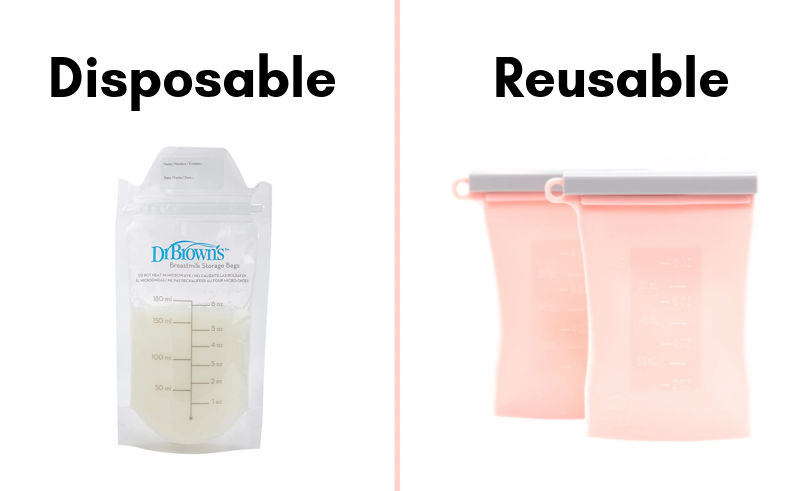
2. Most brands of bags occasionally leak
If you go to amazon, you’re going to see “my breast milk leaked when I used these bags” in the reviews for most of your options.
Ideally, you’d get bags that leak less often than others, and then defrost your milk in a way that minimizes or eliminates waste.
3. Measurements may be off
The milk measurements on breast milk bags (for pretty much all brands) are not particularly trustworthy.
If accurate amounts are important to you, measure the amount of milk in a bottle or on a food scale before you put it in the storage bag.
4. Label your milk
Keep a Sharpie with your breast milk freezer bags and write down the amount and date pumped on the bag.
If your milk may be used in a childcare setting at some point in the future, write your baby’s name on it as well.
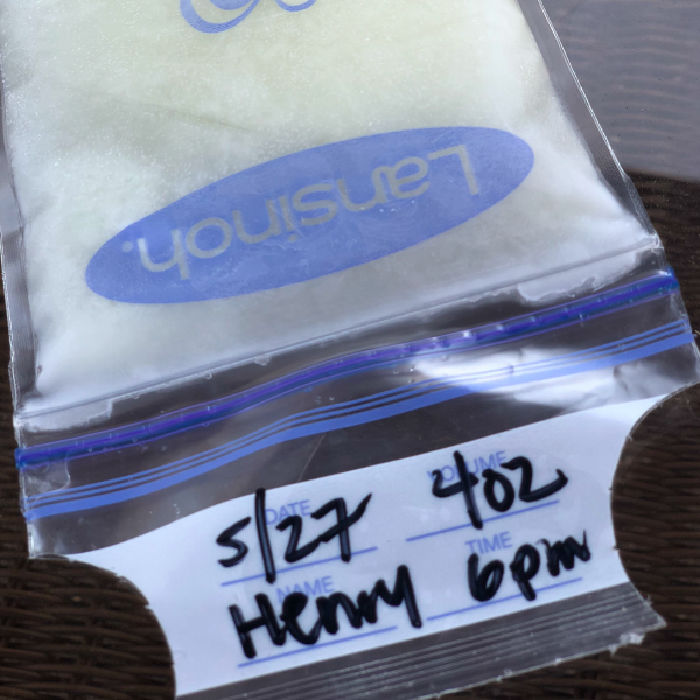
5. Freeze your milk flat
When you’re freezing breast milk, lay it flat to freeze and then put the resulting frozen brick into a gallon-sized zip-top plastic bag for long-term storage.
Storing breastmilk flat saves space versus freezing upright. Additionally, the plastic bag will help prevent the breast milk from getting freezer burn.
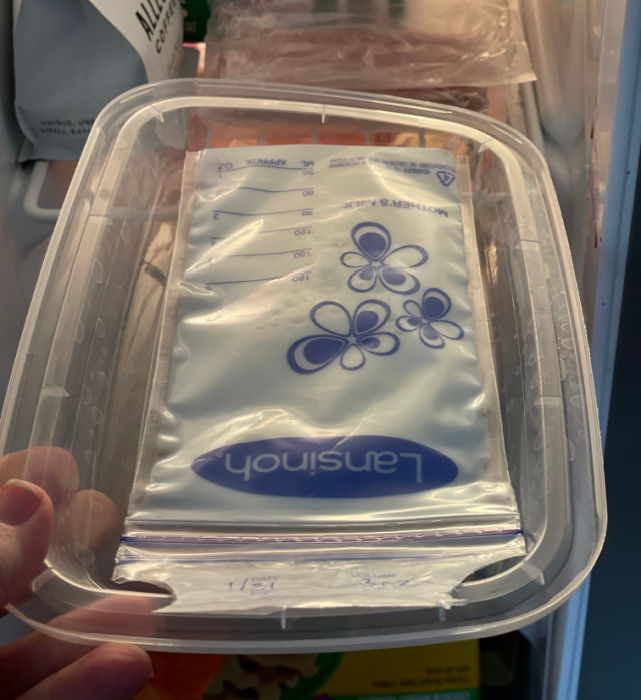
6. Make the oldest milk easy to find
Once you fill up a zip-top plastic bag, write the month that milk was pumped on a sheet of paper in big block letters with your Sharpie, and then put that in the bag.
This way, you don’t have to dig through your freezer to find the oldest milk, which you should use first.
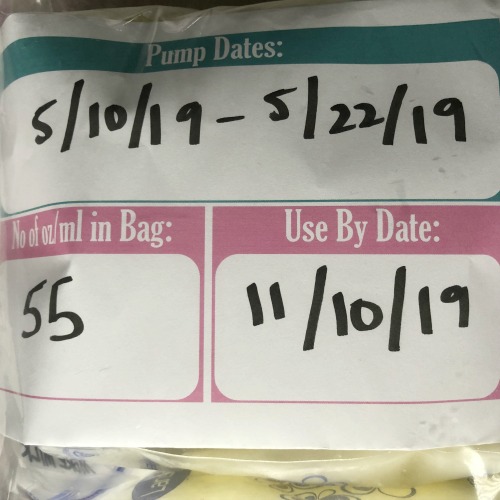
7. You may have insurance coverage
Your health insurance may cover a certain number of bags per month. You can find out if your does here.
How much milk should you freeze in each bag?
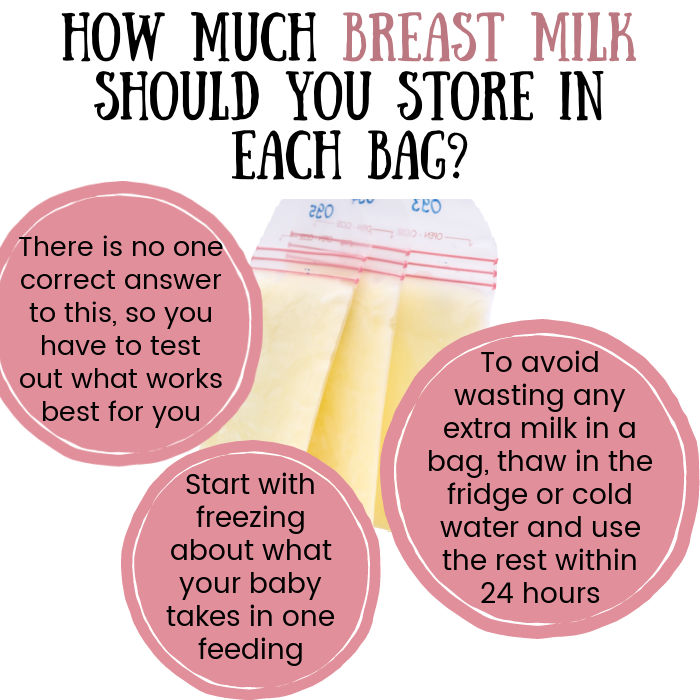
There’s no one right answer for this – everyone manages their milk differently.
If you have no idea how much you should freeze in one bag, I’d start with freezing about what your baby takes in one feeding.
If you end up needing less than you have frozen in a bag, the milk doesn’t have to go to waste. You can thaw the milk in cold water or in the refrigerator and put it in separate bottles for multiple feedings. Just make sure you use the milk within 24 hours of thawing.
Pumping into breast milk bags versus just using them for storage
There are two ways to use breast milk freezer bags.
1. Pump directly into the storage bag
Usually, you would do this by attaching the bag to the pump using an adapter.
For example, if you are an oversupplier who frequently freezes the milk from one pumping session per day, pumping directly into the breast milk storage bag saves you the hassle of washing two bottles.
Also, some people who work or are apart from their baby during travel prefer to transport milk in breast milk bags instead of bottles, because they take up less room. If you’d rather carry breast milk back and forth in storage bags, then pumping into them directly might be easier.
2. Pump into a bottle and transfer
If you pump just enough milk for your baby (with maybe a little extra to freeze), and you are usually with your baby, it probably doesn’t make sense for you to pump directly into storage bags.
In this case, you can also pump into bottles as you normally would, and pour the milk you want to freeze into the bag. (Note: If you do this, use your flange as a funnel to avoid spilling milk.)

Six best breast milk storage bags
Below are six of the best breast milk storage bags:
| Legendairy Milk | 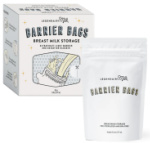 | ✅ Very sturdy and unlikely to leak ✅ Lays flat well and stands up on its own ✅ Has a UV barrier and protects from oxidation | Check Price Use code 15EPUMP |
| Junobie | 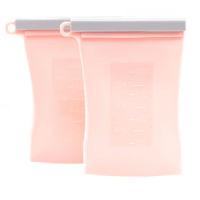 | ✅ Durable, silicone bags that don’t leak ✅ Reusable and eco-friendly | Check Price |
| Lansinoh | 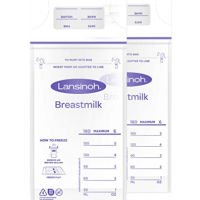 | ✅ Strong bags with a double seal ✅ Easy to freeze milk flat ✅ Holds more milk than many other bags | Check Price |
| Kiinde |  | ✅ Pump into, store, and feed from the same container ✅ No washing bottles | Check Price |
| Nuk | 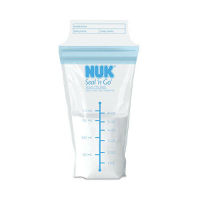 | ✅ Easy to freeze flat ✅ Easy to pour out of | Check Price |
| Dr Brown’s | 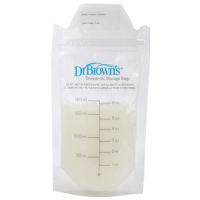 | ✅ Extra thick sides for durability ✅ Double seams to prevent leaks | Check Price |
Here is more information on the pros and cons of each brand of breast milk storage bag.
1. Legendairy Milk Barrier Bags
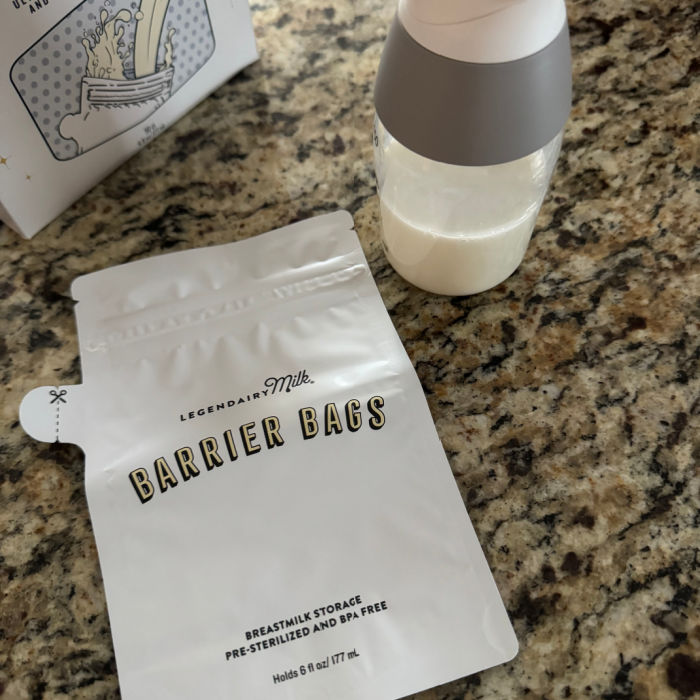
These Barrier Bags from Legendairy Milk are very sturdy and unlikely to leak.
Legendairy Milk Pros
- Has a special barrier to help preserve milk freshness
- Lays flat really well and stands up on its own
- Has an easy pour spout
Legendairy Milk Cons
- You need to make sure not to forget to measure the amount of milk before pouring it in, since the bags aren’t see-through
You can see more of these bags in the below stories:
2. Junobie Reusable Breast Milk Storage Bags

Junobie bags are made of silicone, are very strong and are reusable!
Junobie Pros
- High quality, silicone bags that don’t leak
- Reusable and eco-friendly
- Can be used after you finish breastfeeding (similar to Stasher bags)
Junobie Cons
- Doesn’t make sense for building a large freezer stash (they are more useful if you frequently freeze and use milk)
- The bags are on the expensive side
Below are some stories that I did on Junobie bags:
3. Lansinoh Breast Milk Storage Bags
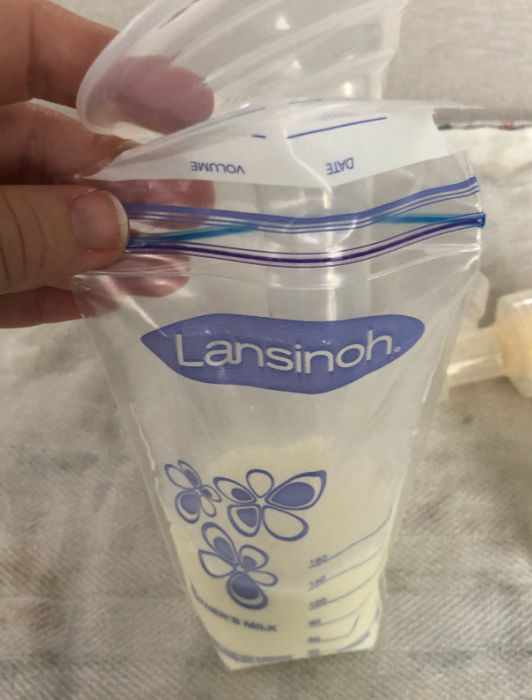
Lansinoh makes a great, lower-priced breast milk bag that is compatible with several breast pumps.
Lansinoh Pros
- Strong bags with a double seal
- Ability to pump directly into the bags using an adaptor with Lansinoh pumps as well as with some Ameda, Evenflo, and Medela pumps
- Easy to store breast milk flat with these bags
- Holds more milk than other bags (technically 6oz, but I’ve put up to 8oz in there without any issues)
- Low price
Lansinoh Cons
- Adapters not compatible with Spectra S1 or S2 (only the Spectra manual pump)
Here’s a Lansinoh bag in action in a story:
4. Kiinde Breast Milk Storage Twist Pouch
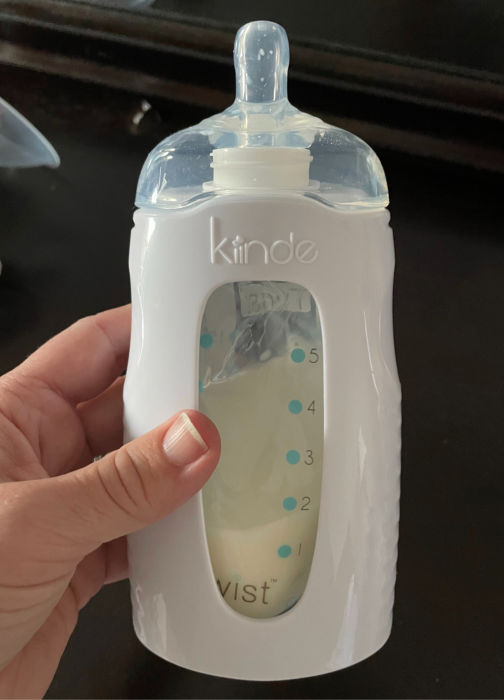
The Kiinde Breast Milk Storage Pouch isn’t just a breast milk bag, it’s a whole feeding system!
Kiinde Pros
- With this breast milk bag, you can pump into it and then store, warm and feed right from the bag (you will need to buy an adaptor separately that fits your pump; all major breast pump models are supported)
- No need to ever transfer milk, which means fewer spills
- No washing bottles, ever
Kiinde Cons
- Higher price point, and exclusive pumpers will need a lot of bags
- Higher level of waste than pumping into reusable bottles (however, these bags are recyclable)
- To use the full system, your baby will have to take the Kiinde Squeeze bottle for feeding (some babies are picky about what bottles they will take)
You can see how it works in the below stories:
5. NUK Seal N’ Go Breast Milk Bags
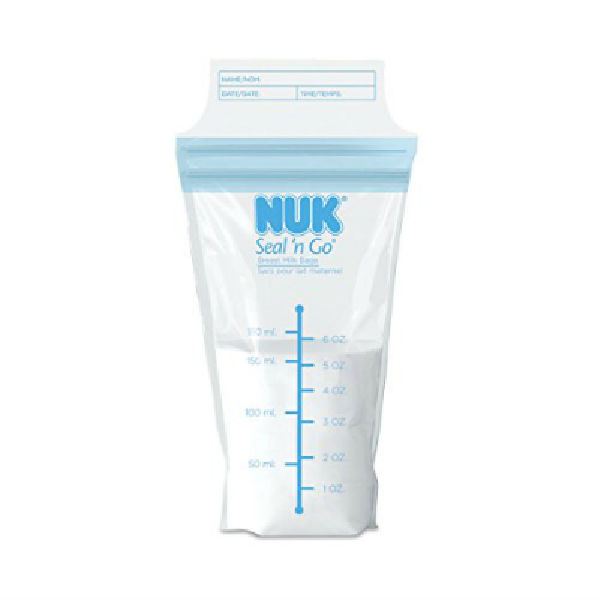
NUK breast milk storage bags are another basic, low-priced option.
NUK Pros
- Durable bags with a double seal
- Easy to pour out of
- Lays flat well in the freezer
- Low price
NUK Cons
- Not designed to work with any adaptors
6. Dr Brown’s Breast Milk Storage Bags
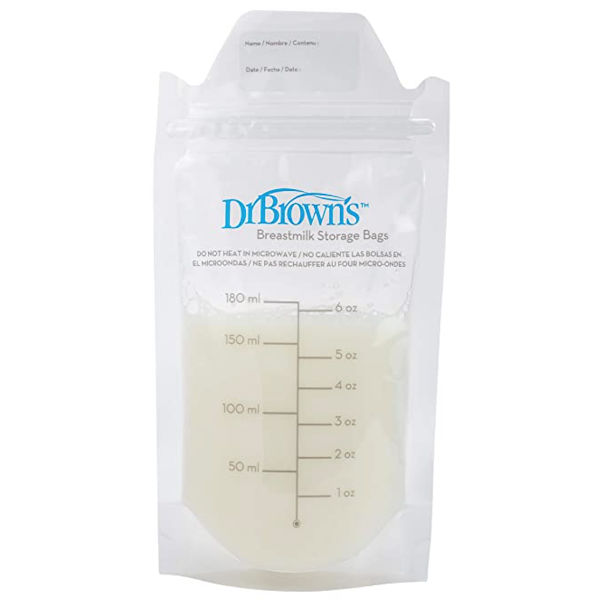
These storage bags are built to be extra sturdy.
Dr Brown’s Pros
- Has extra thick sides for durability
- Double seam to prevent leaks
Dr Brown’s Cons
- Doesn’t lay as flat as other breast milk bags (and it’s difficult to get the air out), which makes storage harder
- Not designed to work with any adapters
What to consider when choosing a breast milk storage bag
So which of these six breast milk storage bags should you get? Here are some things to think about.
Do you want to pump directly into breast milk storage bags?
If so, you’ll want a breast milk storage bag that is intended to work with an adapter and works with your pump.
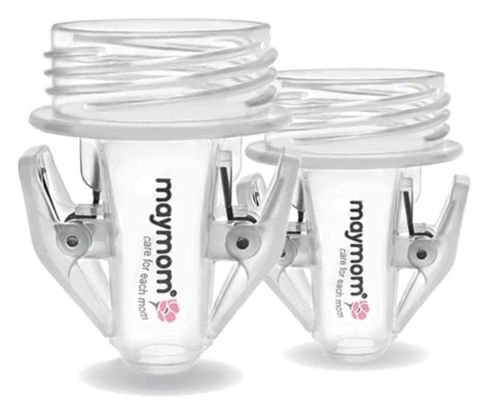
(For breast milk storage bags compatible with Medela, your options are Lansinoh, and Kiinde. If you’re wondering how to pump into storage bags with a Spectra, Kiinde is your best bet.)
If you do not want to pump into storage bags, I would cross Kiinde breast milk bags off of your list.
Do you want to use reusable breast milk storage bags, or disposable bags?
If you’re planning to freeze a lot of extra milk and build a large freezer stash (possibly so that you can wean early), it makes sense to use disposable bags.
However, if you prefer to store milk in bags because it takes up less room, or if you have a system of freezing and using milk (maybe you freeze milk you pump at work on Fridays to feed on Mondays), then the Junobie reusable bags can make a lot of sense.
How many breast milk storage bags do you need?
It depends on whether you’re pumping into bags or not, and how much extra you’ll have to store. If you’re pumping into bags, you’ll need twice as many as the number of pumping sessions you’ll be doing.
For example, if you pump directly into storage bags once a day due to oversupply, you’d need two bags per day, or about 60 per month.
On the other hand, if you’re storing extra milk that you pump into bottles, you can calculate it by determining the number of ounces you want to store in each bag and the amount each day that you usually have leftover.
Example
Say you have 5 oz extra each day and want to store in 3 oz portions:
- You’d have an extra 35 oz each week (5 oz times 7 days).
- Thirty-five ounces divided by 3 oz (the amount you want to store in each bag) is 12 bags.
- Twelve bags per week means you’d need about 50 per month (12 bags times 4 weeks).
If you will need a lot of breast milk storage bags, price might be a big factor in your choice. While prices fluctuate, the Lansinoh, Dr. Brown’s and NUK bags tend to be the cheapest.
What do you think is the best breast milk storage bag? Tell us in the comments!
